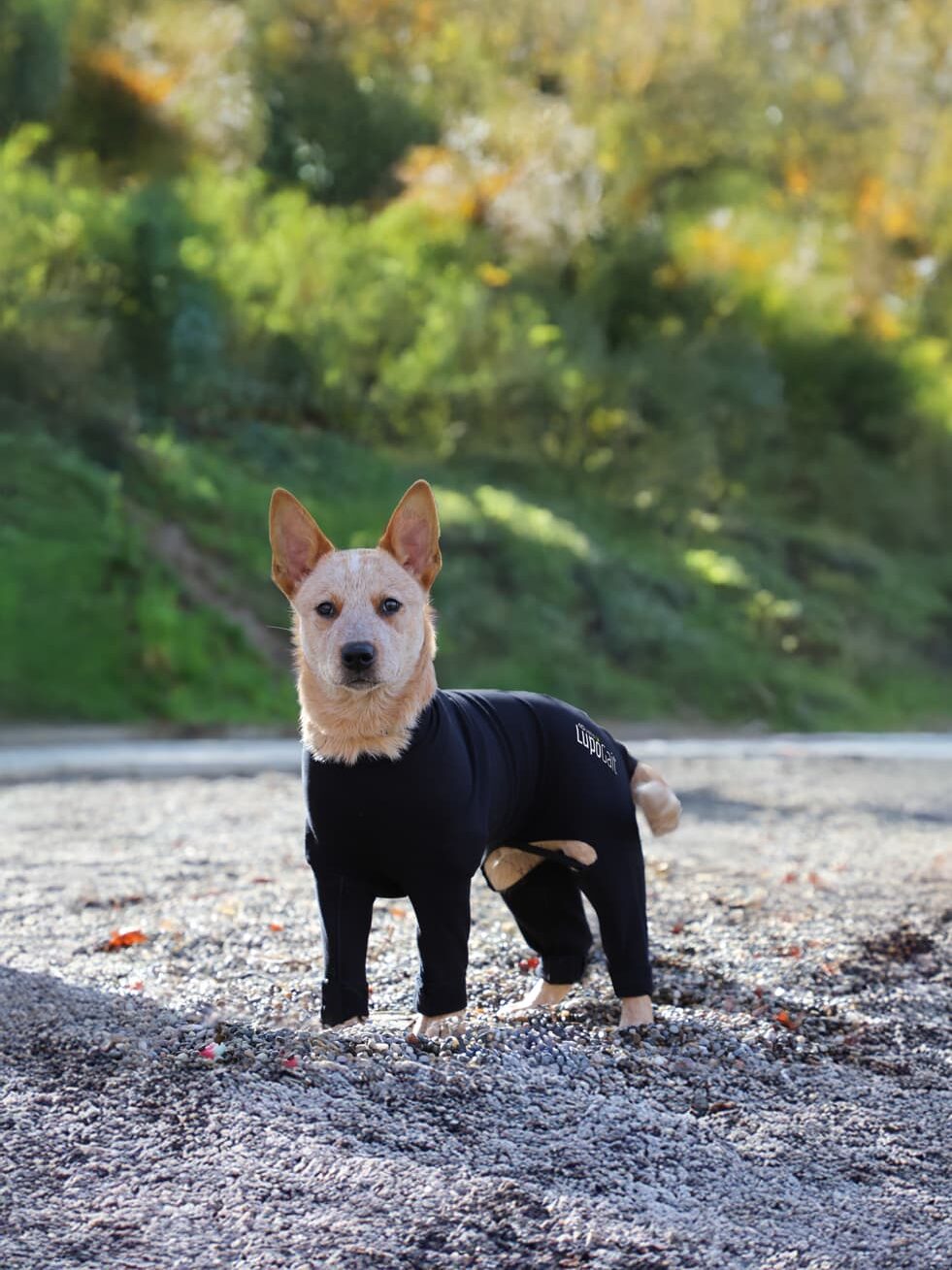Understanding growth – ensuring health
Many orthopaedic diseases develop as early as puppyhood. The LupoGait Puppy Program enables veterinarians, clinics, rehabilitation centers and breeders to provide structured early detection and preventive support for growing dogs – scientifically sound, standardized and practical.
Early detection of hip dysplasia (HD)
Recognize functional changes before structural damage occurs
Hip dysplasia (HD) is one of the most common orthopaedic diseases in dogs – especially in medium to large breeds. However, genetic predisposition alone does not explain the entire risk. Biomechanical stress, movement control and muscular development during growth play a central role in the manifestation of HD.
Kinematic gait analysis as an early warning system
The LupoGait Puppy Program makes it possible to detect functional deviations in the gait pattern as early as 10 to 18 weeks of age – even before radiologically visible changes occur. Particular attention is paid to the following aspects, which can be typical early signs of incipient HD:
- increased movement variance
- asymmetrical load patterns
- and changes in acceleration and rotation behavior
What is LupoGait Puppy?
A mobile, non-invasive approach to serial movement analysis in young dogs. Combines kinematic data with clinical examination and targeted training planning.
The aim is not to diagnose HD when it is too late – but to recognize it as it develops and intervene in a targeted manner.
- Early identification of functional deviations in the gait pattern
- Detection of the first signs of hip dysplasia (HD)
- Prevention of orthopaedic secondary damage through targeted follow-up monitoring
- Development of evidence-based, standardized care during growth
Technology & measuring system
LupoGait Puppy is a module of the LupoGait gait analysis system designed for puppies. It uses 6 IMUs to precisely record the gait pattern. The data is processed in real time and integrated into a digital case history – including symmetry analyses and movement dynamics. This allows functional abnormalities to be detected at an early age, which may indicate the onset of hip dysplasia (HD):
- Step length & extension of movement
- Acceleration & rotational dynamics
- Symmetry in limb loading
- Normalized step values and comparative values left/right
For whom is LupoGait Puppy suitable?
LupoGait Puppy was developed to integrate seamlessly into everyday veterinary practice and breeding. The program is particularly suitable for:
- Veterinary clinics with an orthopaedic or preventive medical focus
- Rehabilitation centers and animal physiotherapy practices that accompany young dogs
- Breeders who value healthy movement development
- Dog trainers who provide professional support for puppies during the development phase
Your advantages at a glance
- Integration into existing examination chains without additional effort
- Mobile, non-invasive application – no sedation, no radiation exposure
- Early detection of functional abnormalities, e.g. the onset of HD
- Objective data basis for diagnostics, progress monitoring and training
- Scientifically sound communication with pet owners and breeders
- Added value for your practice or clinic through clearly structured prevention and evidence-based advice
Clinical benefit
- Indication for further diagnostics – e.g. radiological clarification
- Decision support for preventive measures, such as juvenile pubic symphysiodesis (JPS)
- Integration into screening or breeding programs, also ideal for puppy consultations
- Differentiation of your practice through modern, functional orthopaedics
Scientifically sound
The underlying study (Elsevier, 2024) was able to show that puppies with HD tendencies already exhibited significantly altered gait analyses – long before the onset of clinical symptoms.

LupoGait Puppy in use at your company
Would you like to introduce LupoGait Puppy in your facility?
We support you with:
- System introduction & diagnostics training
- Integration into clinical and preventive routines
- Advice on patient-specific implementation
- Communication with animal owners & breeders